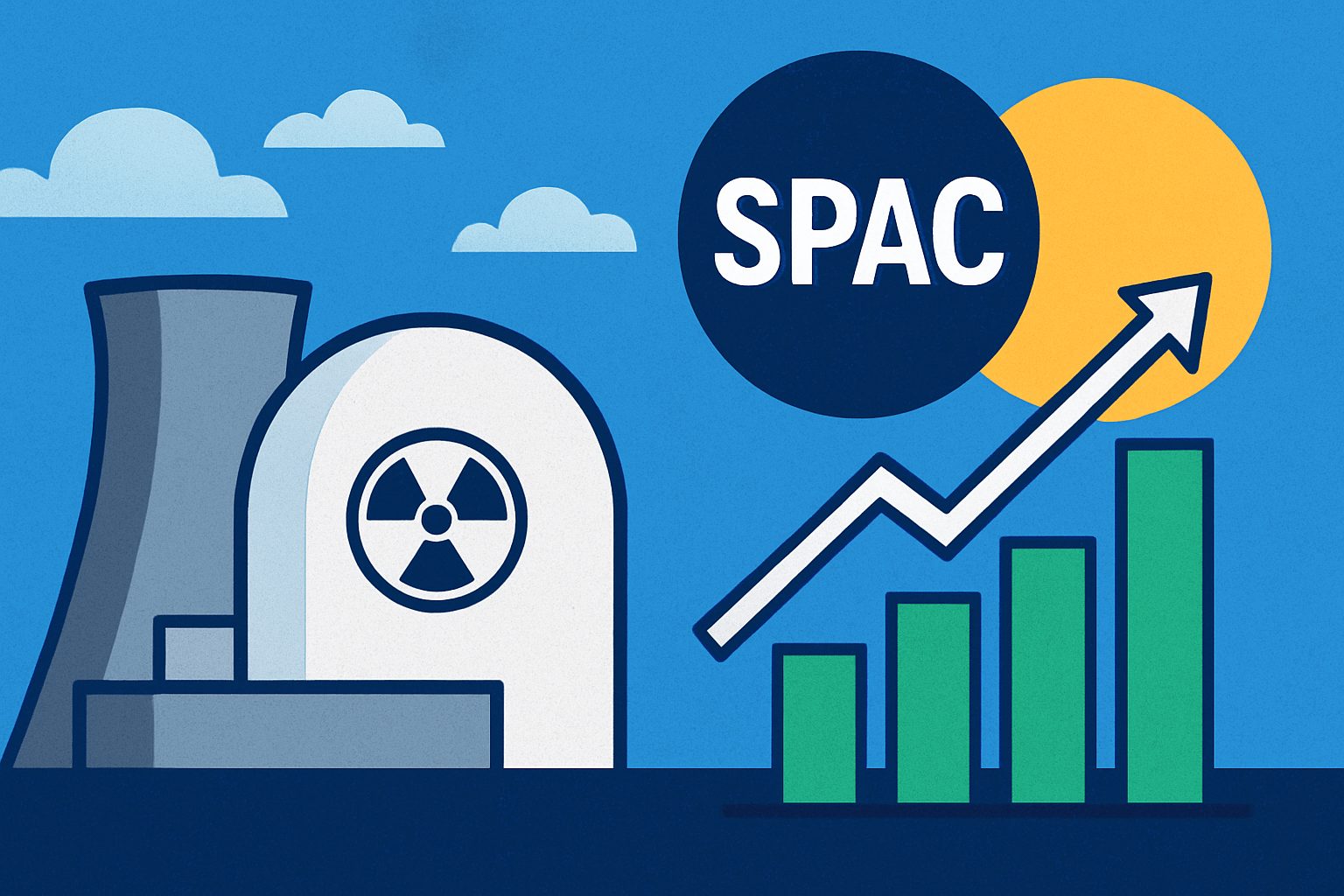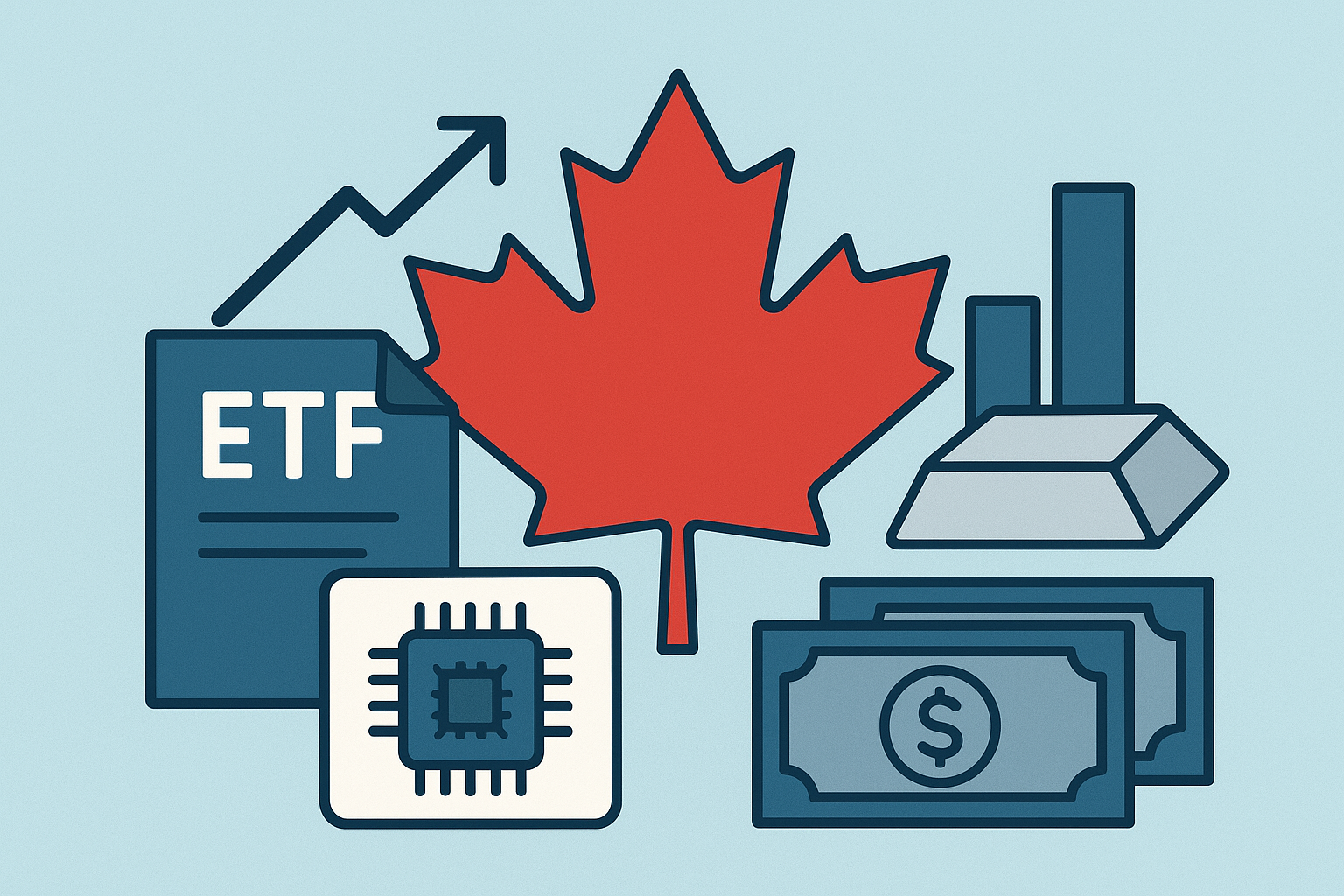A fresh wave of optimism is sweeping through the nuclear power sector as developers of small modular reactors (SMRs) tap into the resurging special purpose acquisition company (SPAC) market to fund next-generation projects. Companies like Terra Innovatum and Eagle Energy Metals have collectively raised over $500 million through recent SPAC deals—capitalizing on heightened political will, strong tech-sector demand, and the urgent push for reliable, carbon-free energy sources.
The momentum comes at a time when U.S. nuclear capacity is targeting a fourfold expansion over the next two decades, fueled in part by the enormous energy requirements of AI data centers and industrial decarbonization. For investors, this signals both a high-growth opportunity and a high-stakes gamble.
Why This Matters for Investors
Nuclear SMRs—compact reactors designed for modular construction and flexible deployment—are emerging as a viable solution for scaling clean energy. Unlike traditional gigawatt-scale reactors, SMRs offer:
- Lower upfront capital requirements (typically $1–2 billion vs. $10+ billion for conventional plants)
- Shorter construction timelines—potentially reducing commissioning time to 3–5 years
- Greater siting flexibility, including in regions with limited grid infrastructure
The recent SPAC resurgence has injected liquidity into the sector, allowing developers to bypass some of the longer lead times and regulatory bottlenecks of traditional IPOs. According to BloombergNEF, global SMR investments could exceed $150 billion by 2040, with North America accounting for nearly half of that growth.
Yet, execution risk remains high. The nuclear sector’s history is littered with cost overruns, project delays, and shifting political winds. As Financial Times notes, while investor appetite is growing, few SMR projects have yet achieved commercial deployment, making the current rally largely speculative.
The AI Power Factor
A less discussed but increasingly significant driver is the AI industry’s voracious energy demand. A single hyperscale AI data center can consume as much electricity as a medium-sized city. With the U.S. Department of Energy projecting a 25% increase in electricity demand by 2035, tech giants are exploring nuclear partnerships to secure stable, low-carbon baseload power.
Microsoft and OpenAI have already signaled interest in nuclear-backed AI infrastructure, and Terra Innovatum’s recent investor deck cites data center integration as a core revenue vertical. This could position SMR developers as key beneficiaries of the AI infrastructure boom, especially if energy security becomes a competitive differentiator in the cloud and AI services market.
SPACs: The Double-Edged Sword
SPACs have re-emerged in 2025 after a period of cooling off, partly due to improved investor sentiment and stronger post-merger performance in sectors tied to energy transition and AI. For SMR companies, SPAC mergers provide:
- Faster access to public capital markets
- Strategic partnerships with institutional backers
- Increased visibility among retail and ESG-focused investors
However, the SEC’s enhanced scrutiny of SPAC disclosures means companies must now demonstrate credible project timelines and cost estimates before going public. Investors should treat lofty revenue projections with caution and scrutinize balance sheets for realistic cash flow horizons.
Future Trends to Watch
- Policy Tailwinds – Bipartisan U.S. legislation, such as the ADVANCE Act, is streamlining SMR permitting and offering federal loan guarantees.
- Private-Public Partnerships – Expect more tech-nuclear alliances, particularly in regions with aggressive carbon-neutral targets.
- Global Competition – Canada, the UK, and South Korea are aggressively advancing their own SMR programs, potentially challenging U.S. leadership.
- Fuel Supply Chains – High-assay low-enriched uranium (HALEU) remains a bottleneck; watch for investments in domestic enrichment capabilities.
Key Investment Insight
The SMR sector sits at the intersection of energy security, decarbonization, and the AI infrastructure boom—a powerful combination for long-term thematic investors. While the SPAC revival offers early-stage entry points, the sector’s speculative nature and execution risks mean a barbell strategy may be prudent:
- Allocate modest capital to speculative SMR developers with strong strategic partners.
- Balance with exposure to established nuclear utilities, uranium miners, and infrastructure ETFs for stability.
As capital flows into nuclear innovation, the coming decade could see SMRs transition from experimental concepts to core pillars of the global energy mix. For investors, the next two to three years will be critical in separating hype from execution.
Stay ahead of the curve with MoneyNews.Today—your trusted source for market-moving insights and deep-dive investment analysis.





